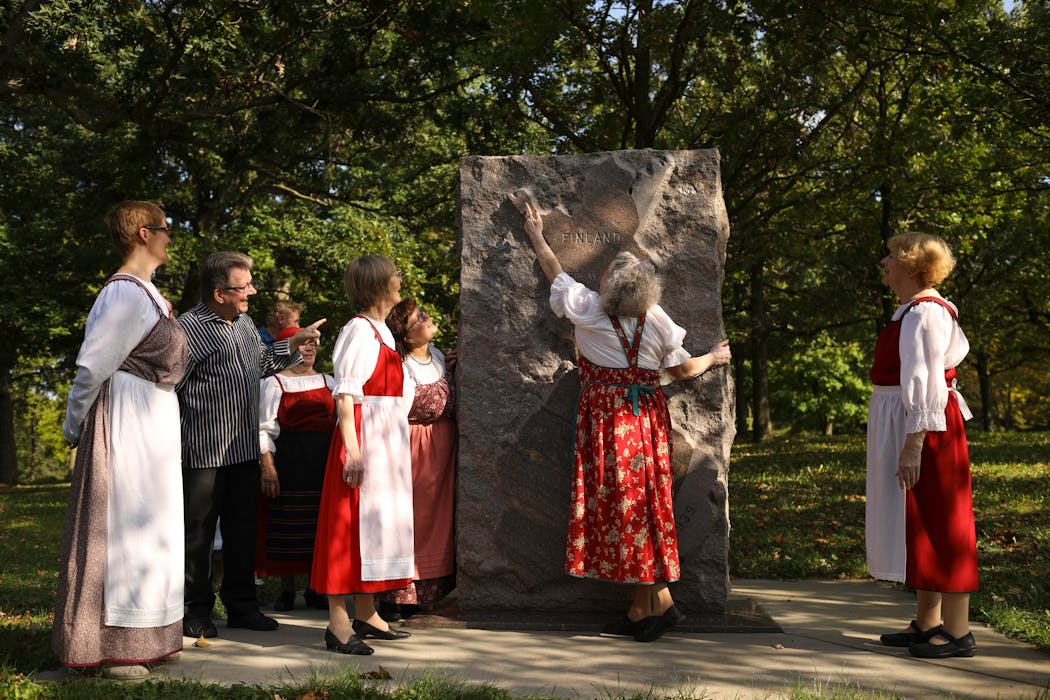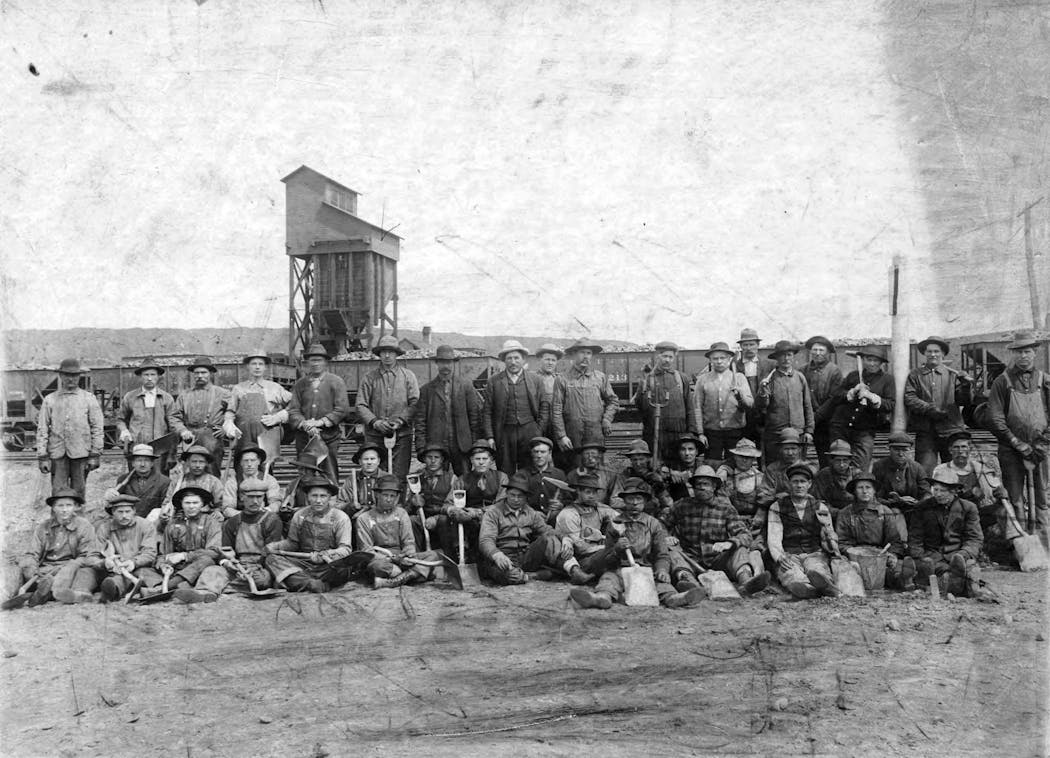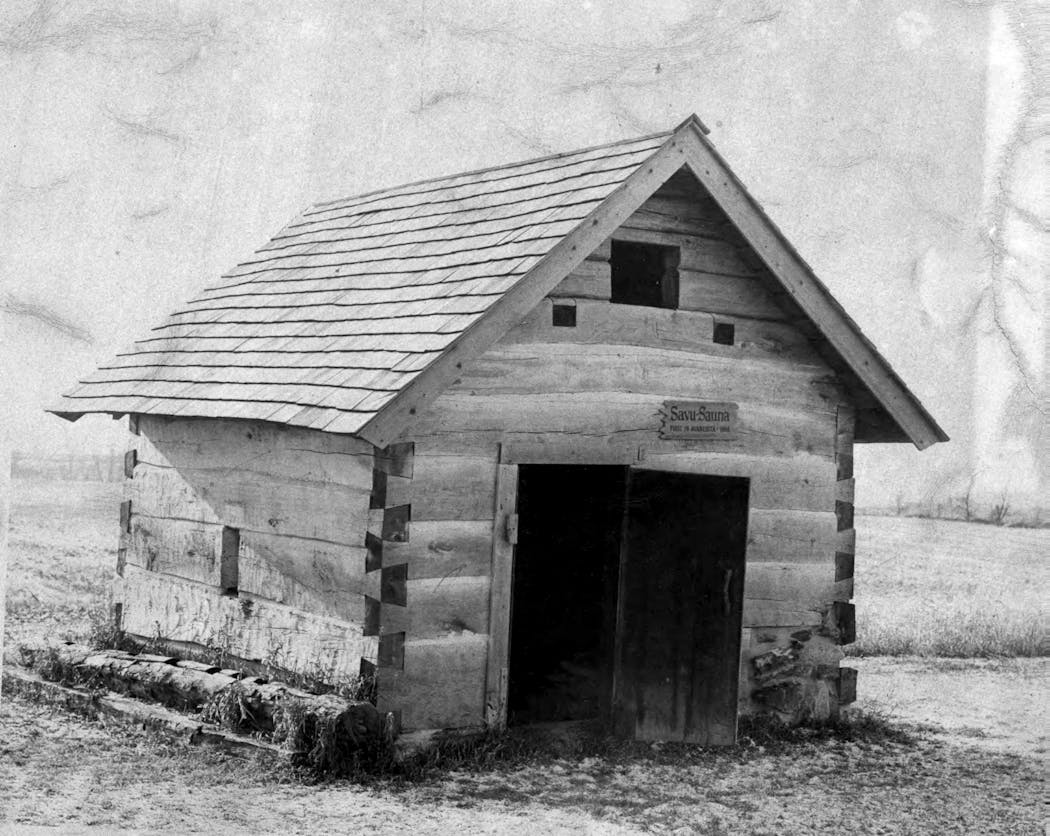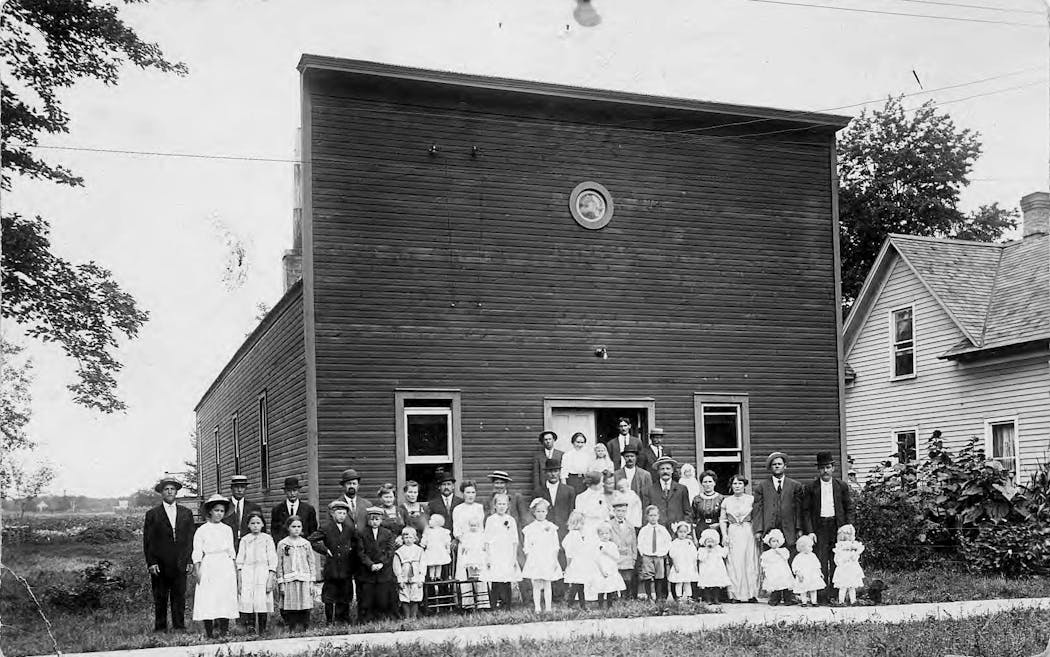Why did Finnish immigrants come to Minnesota? (And no, they're not Scandinavian)
Listen and subscribe to our podcast: Via Apple Podcasts | Spotify | Stitcher
Sweating in saunas is a longstanding winter tradition among cold-hardy Minnesotans. But it wasn't Scandinavians who brought this unique custom to the North Star state.
Saunas are among the contributions that Finnish immigrants made to Minnesota culture — along with radical politics, cooperative businesses and place names like Esko and Finland.
Some readers objected to the omission of Finns from a recent Curious Minnesota story on the history of Scandinavian immigration to Minnesota. Despite Finland's proximity to Norway and Sweden, however, Finnish is not a Scandinavian language. Finland is typically considered a Nordic country.
Les Maki's Finnish grandparents arrived here in the early 1900s. He asked Curious Minnesota, the Star Tribune's reader-powered reporting project, to explain the background of Finnish immigration to the state. During a phone interview, Maki sported a sweatshirt featuring the word "Sisu" — a hallmark of Finnish culture.
"Sisu is fortitude, guts, perseverance," Maki said. "That … no matter what it takes, this job is going to get done."
The Finnish immigration story is a tale worth telling, since Minnesota has more residents of Finnish ancestry — about 100,000 people — than any other state, according to U.S. Census Bureau data. It ranks just ahead of Michigan.
The mass arrival of Finns to Minnesota was also distinct from Norwegian and Swedish immigration in several ways. Finns arrived in large numbers several decades after their Scandinavian counterparts. And Finns became more associated with a particular corner of the state, northeastern Minnesota, where they found jobs in the mining and lumber industries.
The size of the Finnish diaspora never quite rivaled Swedish and Norwegian immigration. More than 100,000 foreign-born Swedes and Norwegians, respectively, lived in Minnesota around the turn of the 20th century, according to census data analyzed by the state demographer's office. The number of foreign-born Finns, by comparison, peaked at just under 30,000 in 1920.
Leaving Finland
Like in neighboring Scandinavian countries, health advancements caused Finland's population to nearly triple during the 1800s. But there was not enough farmland to support these additional people, creating poor economic conditions that were compounded by famines in the 1860s, according to the book "They Chose Minnesota."
Some Finns sought work across Finland's northern border in Norway. It was there that the first group of Finns joined a growing flow of Norwegians seeking a new life on America's western frontier of Minnesota, according to the book. These early Finnish Minnesotans established settlements in Renville and Wright counties, both west of modern day Twin Cities.
"Norwegians were settling there, so they would follow them from northern Norway," said Arnold Alanen, author of the book "Finns in Minnesota" and a descendant of Minnesota Finnish immigrants.
By the 1880s, the Finnish hub began moving farther north to the New York Mills area in Otter Tail County, where the new immigrants "participated wholeheartedly in converting forests into farms," according to "Finns in Minnesota."
Finns began arriving in larger numbers starting in the 1890s, Alanen said. This was fueled in part by Russia — which ruled over its neighbor Finland — revoking the country's quasi-independence and drafting Finns into its military.
"The [departing] Finns are saying, 'I don't want to have anything to do with Russia's wars,' and they head for the borders," said Bill Convery, research director for the Minnesota Historical Society.
Clustering Up North
But Minnesota's prime agricultural land was no longer as available as it was in the 1860s, when the U.S. government had simultaneously forced Dakota people from the state and offered free land to incoming white settlers.
"Swedes, Norwegians, Germans, native-born Americans are coming in earlier and they're getting better farmland in south and south-central Minnesota in general," Convery said. "So as a later arriving group, the Finns are finding that they have to move farther north to find farmland."
Some Finns farmed so-called "cutover" land Up North, where trees had been felled and soils were poor. But greater numbers of migrants, most of whom were men in the early years, took laborious jobs harvesting trees and mining iron ore.
"I think that logging was really what attracted people initially if they needed work," Alanen said. "But then mining just really drew so many people to the communities of the Iron Range."
Minnesota's commissioner of labor reported in 1902 that 40% of the state's mining employees were Finnish, according to "Finns in Minnesota." He characterized them as "strong, well-built, used to hard work and meager fare."
Finns often were tasked with the grunt work of mining, many of them laboring with shovels and picks deep underground.
"That's why so many Finns were killed in the mines, too, because they were doing so much of that very hard and difficult dangerous work," Alanen said.
Finnish communities were most prevalent in the Mesabi range northwest of Duluth, like the mining towns Virginia, Hibbing, Chisholm and Eveleth, according to the book. Finns also comprised the largest group of immigrants living in Duluth, which Alanen said became known as the "Helsinki of America."
"That was really a key city for people to go to and then perhaps branch out from there later on," Alanen said. Some arrived in Duluth on trains from the south, he said, but later on many arrived by ships traversing the Great Lakes.
Saunas and politics
Whether on farmsteads or on main streets, saunas (pronounced sow-na) were a must-have amenity for any Finnish settlement. The sauna was where Finns bathed, before modern plumbing.
Early saunas involved heating a wood-burning stove in a chimneyless building and allowing the smoke to vent before users entered the darkness and — as remains the custom — swatted themselves with handfuls of small branches, according to Alanen's book.
"The Finns' sauna rituals could appear strange and even bizarre to outsiders, some of whom believe that magic and witchcraft were practiced inside the huts," he wrote.
Finns were also known for their left-leaning politics, possibly derived from the Russian persecution they endured in their homeland, according to "Finns in Minnesota."
This materialized in a multitude of Finnish Socialist clubs in the northland. The Finnish Socialist Federation, a nationwide Socialist Party association founded in Hibbing, had 47 Minnesota chapters at its peak in 1911, according to "They Chose Minnesota."
"That led to a lot of the unionization and, of course, to a fair amount of labor unrest in time, as well," Convery said. When workers began initiating strikes on the Iron Range, some mining companies blacklisted Finns "they identified as militants and 'troublemakers,' " according to "Finns in Minnesota."
The Finns also became known for establishing cooperative business enterprises, particularly retail stores, according to "Finns in Minnesota." The Finnish Socialist Federation encouraged the so-called consumers' cooperatives, which multiplied amid mining strikes when other stores stopped selling to Finns, the book stated.
"At one time ... there were over a hundred of those little stores dotting the landscape — mostly in northeastern Minnesota, but wherever there were Finns," Alanen said.
Not all of Minnesota's Finns spoke Finnish. Texts on Minnesota's Finnish immigration often highlight the Finland Swedes or Swede-Finns, a Swedish speaking group that emigrated from the western portion of Finland. By some estimates, 6% of Minnesota's Finnish immigrants spoke Swedish, according to Alanen's book. It notes that Swede-Finns often felt isolated from other immigrant groups.
Finnish culture lives on in Minnesota today. The state's Finnish heritage is documented in museums in Cokato, Esko, Embarrass, Finland and New York Mills. FinnFest USA, a Minnesota-based organization, hosts an annual festival honoring Finnish culture in locations across the country — the 2023 event is in Duluth.
In March every year, Finns celebrate St. Urho's Day, based on a mythical figure devised by a Bemidji State University professor in the 1950s. Prominent St. Urho statues are on display in Menahga and Finland, Minn.
"It's just one of those things that Finnish Americans have invented to display their Finnishness," Alanen said.
If you'd like to submit a Curious Minnesota question, fill out the form below:
Read more Curious Minnesota stories:
Is Minnesota actually more German than Scandinavian?
Why did Scandinavian immigrants choose Minnesota?
How did the Twin Cities become a hub for Somali immigrants?
What are the top five immigrant groups in Minnesota?
How did early settlers survive their first Minnesota winters?
What did the topography of the Iron Range look like before it was mined?






